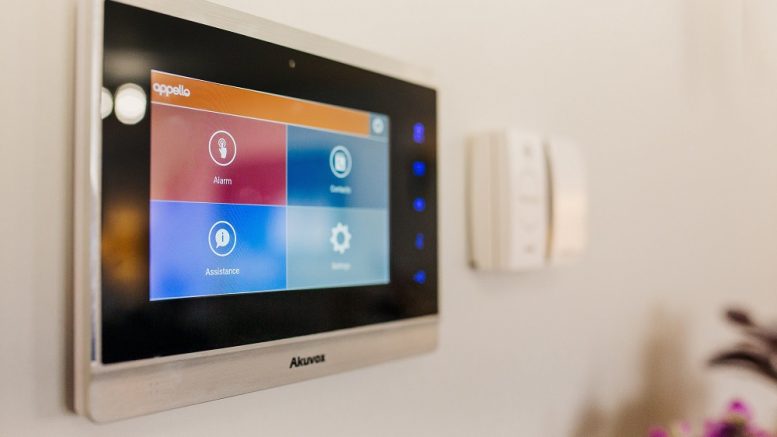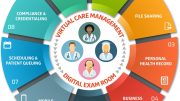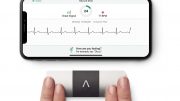Julie Dowson, Commercial Director at Appello examines what a new payment and service model would mean for housing providers and residents when refreshing telecare solutions.
From data storage to Netflix and Spotify, or even coffee beans, the subscription economy is booming. Adoption is wide in the business world too, with companies such as Microsoft and Adobe offering software-as-a-service (SaaS) models for programmes like Word and Photoshop.
Given the way it’s currently positioned towards entertainment and business tools, you might not automatically assume that the next step for this model would be in caring for older people.
Many in the housing industry, along with its technology providers, would agree that the current telecare purchasing landscape is very traditional, and conforms to a standard method. Hardware wise, you’re looking at a lump sum of around £30,000, or thereabouts, for a warden call system to be installed. This then leads to obligatory maintenance and replacement costs when the technology requires refreshing or when failures occur.
Every housing provider factors this into a budget and when the technology becomes outdated or unsafe, or incompatible with the software needed for monitoring, the whole system has to be replaced at the same cost.
But with many businesses in other industries shouting about the ease of different service or payment models, does it have to be this way? The housing sector is changing as fast as any other in terms of its technological advances, as are the expectations of older residents and their family members. They rightly want the latest digital telecare solutions as well as the accessories that are offered alongside these, to be modern, safe and as up to date as possible.
This begs a requirement that the technology works on the latest devices. Tablets allow residents to overcome social isolation with video calling and smart wearable devices are more stylish than the clunky pendant alarms, as well as providing support wherever the resident might be.
As a result of this, and the fact that the analogue telecare solutions will all need upgrading to digital ahead of BT turning off the analogue signal in 2025, many housing providers will be facing significant technology refreshes over the next few years.
At the moment, most monitoring services are already on a SaaS model. Residents, or their carers, pay a small monthly fee, along with their rent or bills, for this service. There is currently nothing equipment-based in that relationship. But this could change to a new kind of model. One that provides both the equipment, any monitoring or maintenance service, plus any refreshes throughout the lifetime of the agreement. All in one monthly subscription based package – a Telecare-as-a-Service (TaaS) model.
Who would benefit from this model and why?
For a local authority, it will revolutionise budgeting. For example, if signed up to a five or ten-year TaaS plan, they can ensure that will not change for the length of the contract. Whereas with the current model, the one-off cost for a telecare solution might fluctuate, so it’s harder to predict and budget.
Security is also a major consideration. A TaaS model would likely include regular system enhancements, so as the provider writes or produces software that’s more resilient to attack or fixes areas more resilient to failure, they would do a remote flash of the product to keep them current. This applies to the physical hardware also, as major new changes would be swapped out before the end of the depreciation era of the hardware, making it more current and less prone to failure.
It goes without saying that there is an overall benefit to the resident. A safer system, one that is constantly maintained and refreshed, gives peace of mind that if there is an emergency, their call system won’t fail them. And that if there are available upgrades that could improve their quality of life, they will be the first to receive them.
What are the roadblocks to TaaS?
Most of the apprehension around a subscription or TaaS model is down to funding. Local authorities generally request a set of capital expenditure, which covers the installation of telecare systems. This works on the principle that if you do not use the full budget, it will no longer be available. A new payment model could be complex to arrange in this case as traditionally local authorities are used to spending a large sum on a system upgrade and then only having a very low expenditure for monitoring.
TaaS would require complete re-evaluation, and in some cases, it would need to be communicated and agreed by all customers. Regardless of the size of your team or operation, this can take a lot of effort to process and adjust a strategy internally.
What this would mean, would be that instead of a capex budget, they would need to switch to an opex budget. This would take evaluation and it would fall down to how they treat that requirement. Do they want short-term gain through margin, or long-term security through their budget?
TaaS is a very different model to what providers of housing and care to older people are used to. If you look at the industry as a whole there are millions of telecare devices in use. 70% of that is funded by a local authority or a housing association and historically that has been funded through a capex model. But a good technology service provider will understand these issues and help you to navigate any changes to funding.
Realistically, the digital upgrade will drive change no matter what, and housing providers will be forced to re-evaluate current models. But this doesn’t need to be a scary or complicated process.
In the long run a TaaS model will be easier to manage and will provide more budget security. With a subscription service, you’re not just paying for the technology you’re also paying for the insurance that the equipment will be serviced, refreshed and monitored through the lifetime of the agreement.
Your provider will take care of all of your telecare requirements, leaving you more time and space to focus on improving other areas of your business.





